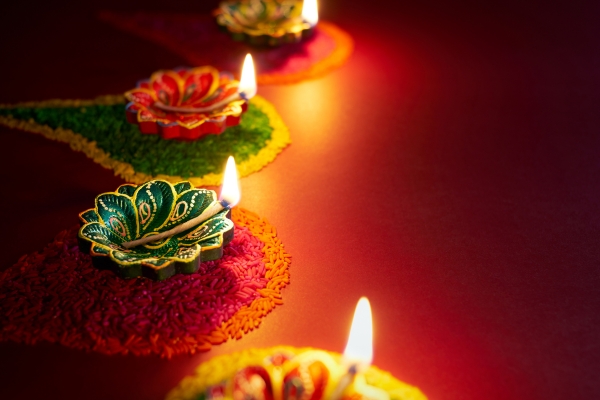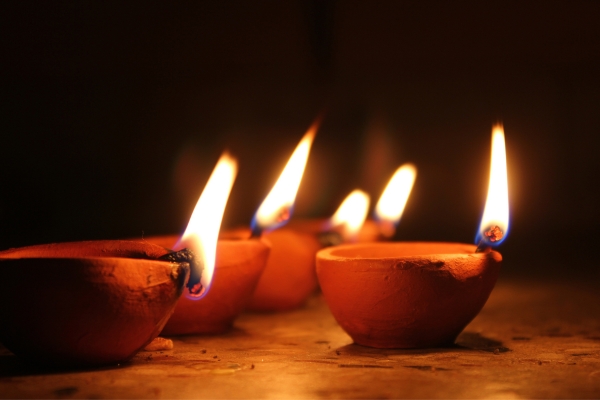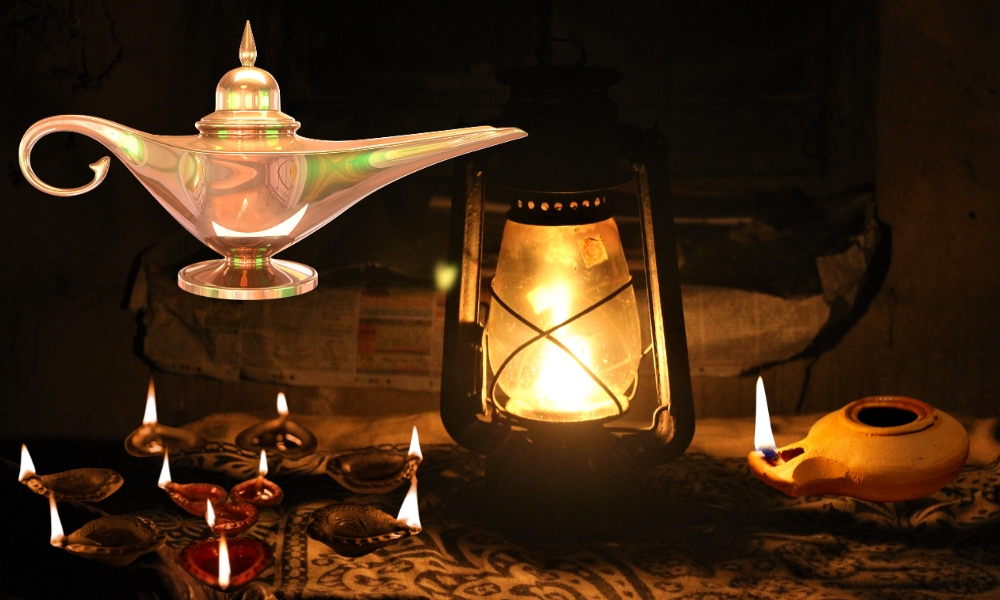Oil lamps, a staple of illumination for centuries, operate on a simple yet effective principle. Understanding how oil lamps work involves exploring their fundamental components: the fuel reservoir, wick, and chimney. When the wick absorbs the oil and is lit, it burns the vaporized fuel, producing a steady flame. The lamp’s design ensures a continuous supply of oil to the wick, maintaining consistent light. This mechanism, rooted in ancient innovation, remains relevant today, blending practicality with a touch of nostalgic charm.
What Is an Oil Lamp?
An oil lamp is a device used for producing light continuously for a period of time using an oil-based fuel source. The basic components of an lamp include a fuel reservoir to hold the Itl, a wick that absorbs the oil and channels it to the flame, and a chimney or glass cover to protect the flame and improve efficiency by guiding air flow. When the wick is lit, the heat of the flame vaporizes the It, which is then burned to produce light. This simple yet effective mechanism has been used for centuries, providing a reliable source of illumination in homes, places of worship, and outdoor settings.
Types of Oil Lamps
1. Traditional Oil Lamps

Traditional lamps are the classic designs that have been used since ancient times. These lamps typically feature a simple structure made from materials like clay, metal, or glass. Traditional lamps often have an open or semi-enclosed design, with a shallow bowl to hold the oil and a spout or opening where the wick is positioned. They commonly use vegetable oils or animal fats as fuel. These lamps are not only functional but also hold cultural and historical significance in many societies, often used in religious and ceremonial contexts.
2. Modern Oil Lamps

Modern lamps, while based on the same fundamental principles as traditional ones, incorporate advanced materials and design improvements for better efficiency and safety. They often use cleaner-burning fuels such as kerosene or paraffin oil, and feature adjustable wicks to control the flame size and brightness. Many modern lamps are equipped with enclosed glass chimneys or globes, which protect the flame from wind and drafts, making them suitable for both indoor and outdoor use. Some designs also include features like fuel level indicators and safety shut-off mechanisms, combining traditional ambiance with contemporary convenience and safety.
Components of an Oil Lamp

1. The Lamp Body
The lamp body is the main structure of an oil lamp and serves as the container for the fuel. It is typically made from materials such as metal, glass, ceramic, or clay. The design of the lamp body can vary greatly, ranging from simple, functional shapes to intricate and decorative forms. The body not only holds the fuel but also provides stability to the lamp, ensuring it remains upright and secure during use. The size and shape of the lamp body can influence the duration of the burn and the intensity of the light produced.
2. The Wick
The wick is a crucial component of an oil lamp, acting as the conduit for the fuel to reach the flame. It is typically made from braided cotton or other absorbent materials. The wick extends from the fuel reservoir into the air, where it can be lit. When the wick is ignited, the heat causes the fuel to vaporize, and this vapor is what burns to produce light. The length and thickness of the wick can be adjusted to control the size of the flame and the brightness of the light. Proper maintenance of the wick, such as trimming it regularly, is essential for efficient operation and to prevent excessive smoke.
3. The Fuel
The fuel used in an oil lamp is typically a liquid oil that is easily vaporized when heated. Traditional fuels include vegetable oils and animal fats, while modern lamps often use kerosene, paraffin oil, or lamp oil, which burn more cleanly and produce less soot. The choice of fuel affects not only the brightness and quality of the light but also the safety and cleanliness of the lamp’s operation. High-quality fuels ensure a steady and consistent flame, minimal smoke, and a longer-lasting burn. Proper storage and handling of the fuel are important to ensure the safe use of the oil lamp.
How Oil Lamps Work
Oil lamps operate through a straightforward yet effective mechanism that involves a few key components: the lamp body, the wick, and the fuel. The lamp body houses the fuel, which is absorbed by the wick. When the wick is lit, the heat from the flame vaporizes the oil, and this vapor is what burns to produce light. The flame remains steady as long as there is a continuous supply of oil to the wick. This system allows for a consistent and controlled light source, making lamps a reliable means of illumination for centuries.
Choosing the Right Fuel
Selecting the appropriate fuel for an oils lamp is crucial for optimal performance and safety. Traditional fuels, such as vegetable oils and animal fats, are suitable for historical and ceremonial uses but tend to produce more smoke and soot. Modern alternatives like kerosene, paraffin oil, and specially formulated lamp oils burn more cleanly and efficiently, reducing smoke and odor. When choosing fuel, consider factors such as burn time, cleanliness, and availability. Always ensure the fuel is compatible with your specific lamp type to avoid damage and maximize the lamp’s efficiency.
Advantages of Using Oil Lamps
lamps offer several benefits that make them an attractive option for various settings. One of the main advantages is their simplicity and reliability; they do not rely on electricity, making them useful during power outages or in remote areas. Additionally, lamps provide a warm, ambient light that creates a cozy atmosphere, ideal for both indoor and outdoor use. They are also relatively inexpensive to operate and maintain. With a wide range of designs available, from traditional to modern, lamps can serve both practical and decorative purposes, adding a touch of charm to any space.
Common Uses of Oil Lamps
1. Decorative Purposes

lamps are often used for decorative purposes due to their charming and nostalgic appearance. They can enhance the aesthetic of any room, providing a warm and inviting glow that electric lights often fail to replicate. Decorative lamps come in a variety of styles, from antique and vintage designs to modern and sleek models, making them versatile pieces that can complement different interior decor themes. They are popular in settings such Many Lamps In Living Room, dining areas, and outdoor patios, where their soft light creates a cozy and intimate ambiance.
2. Emergency Lighting

Oil lamps are a reliable source of emergency lighting, especially during power outages or in areas without access to electricity. Their simple operation and independence from the power grid make them an essential item in emergency preparedness kits. Oil lamps can provide hours of light on a single fill, ensuring that households remain illuminated during unforeseen circumstances. Their portability also allows them to be used in various locations, offering flexibility and convenience when navigating through dark spaces.
3. Religious and Cultural Uses

Oil lamps hold significant importance in many religious and cultural traditions around the world. They are often used in ceremonies, rituals, and festivals to symbolize purity, enlightenment, and the presence of the divine. In Hinduism, lamps are lit during Diwali, the festival of lights, to represent the triumph of light over darkness. In Christianity, lamps are sometimes used in churches during services and processions. Similarly, in many other cultures, lamps play a central role in marking special occasions and honoring ancestral traditions, underscoring their deep cultural and spiritual significance.
How Do You Clean an Oil Lamp?
Cleaning an It lamp is essential for maintaining its efficiency and prolonging its lifespan. Here are the steps to clean an lamp effectively:
- Disassemble the Lamp: Begin by carefully taking apart the lamp. Remove the chimney, wick, and any other detachable parts. Make sure the lamp is cool and the flame is completely extinguished before starting.
- Clean the Chimney: Soak the glass chimney in warm, soapy water to loosen any soot or residue. Use a soft brush or cloth to gently scrub the inside and outside of the chimney. Rinse thoroughly with clean water and allow it to dry completely.
- Clean the Wick: Inspect the wick for any charred sections and trim these parts off with scissors. If the wick is heavily soiled or too short, replace it with a new one. Regularly trimming the wick ensures a cleaner burn and reduces smoke production.
- Empty and Clean the Fuel Reservoir: Pour out any remaining fuel from the reservoir and wipe the inside with a cloth dampened with soapy water. Avoid using harsh chemicals that could damage the lamp. Rinse with clean water and dry thoroughly before refilling with fresh fuel.
- Reassemble the Lamp: Once all parts are clean and dry, reassemble the lamp. Ensure the wick is properly positioned and the chimney is securely in place. Fill the reservoir with the appropriate It, and your lamp is ready for use.
Conclusion
Oil lamps, with their enduring charm and practicality, remain valuable sources of light for various purposes. Whether used for decorative appeal, emergency lighting, or religious and cultural practices, understanding. How to properly maintain and clean oil lamps ensures their continued effectiveness and longevity. By choosing the right fuel and regularly cleaning the components, you can enjoy the warm, steady light of an It lamp for many years to come.
